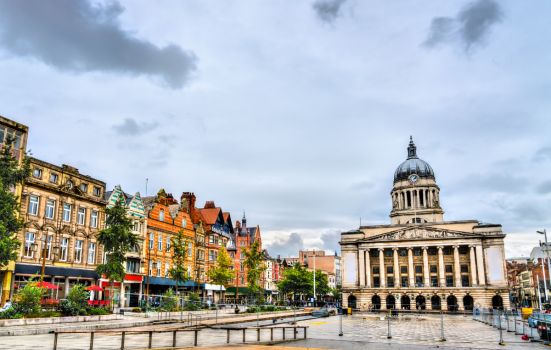Historic levels of funding from local authorities, Arts Council England and National Lottery across Derbyshire and Nottinghamshire found to be below average.

Leonid Andronov/iStock
The combined areas of Derby, Derbyshire, Nottingham and Nottinghamshire are receiving a lower than average share of arts funding when compared with other regions, according to independent analysis by consultancy Data Culture Change.
David Brownlee, Chief Executive of Data Culture Change, says arts investment in the areas, known collectively as D2N2, was less per person than the English average on every metric examined.
“This was also almost universally true when London was excluded. The region is home to an amazing range of funded and unfunded arts organisations,” he said.
READ MORE:
- Birmingham and Nottingham rubberstamp culture cuts
- Derby Council to put community libraries out to tender
“They could be doing so much more to improve life and opportunities in their communities if the region received an equitable share of national and local government and Lottery arts funding”.
The analysis found that, since the inception of the National Lottery in 1995, D2N2 has received £10 less per capita in arts funding compared with the average for English regions, excluding London, which amounts to more than £21m in lost funding.
A total of 25 arts organisations in the D2N2 area currently receive Arts Council England (ACE) funding, equating to £11.5m annually. Data Culture Change calculated this works out at £5.21 per person, compared with the English average of £6.14.
Meanwhile, the 19 local authorities in D2N2 collectively invest £8.3m annually in the arts, amounting to £3.79 per person, compared with the English regional average of £7.14.
Focus on Nottingham
Data Culture Change also reviewed the levels of arts expenditure in Nottingham compared with seven English cities that feature in the UK’s Core Cities alliance: Birmingham, Bristol, Leeds, Liverpool, Manchester, Newcastle and Sheffield.
Nottingham placed lowest of the eight cities in local authorities’ per capita annual net expenditure on the arts. The average across all core cities’ local authorities was £12.75 in 2022/23, while it stood at £4.73 in Nottingham.
Data Culture Change calculates that if Nottingham had matched the English average, the arts would have received an additional £2.6m in local authority support. Last month, Nottingham City Council confirmed plans to cut arts funding by 100%.
In analysis of arts funding distributed to projects through the National Lottery since 1995 in England’s core cities, Nottingham placed sixth, with Birmingham and Sheffield behind.
Nottingham is currently home to 14 ACE-funded organisations, compared with a core city average of 22, with only Sheffield having less (11). The city placed seventh out of eight for per person revenue funding from ACE, receiving £18.67 compared with a core city average of £25.37. Sheffield fared worse again, at around £7 per person.
Mayoral elections approach
The analysis has been published ahead of the Mayoral Elections for the East Midlands Combined County Authority on 2 May, when six candidates will seek to become the region’s first ever mayor.
Data Culture Change says it wants policymakers and stakeholders in the area to “prioritise equitable funding to support the vital role of the arts in enriching communities and transforming lives across the region”.
Stephanie Sirr, Nottingham’s Strategic Cultural Partnership Chair, said the study highlights a “pretty dreadful picture of historic and current funding” and added “the future is at risk of worsening further with local cuts to all arts funding”.
“It’s encouraging to see Mayors of other Combined Authorities not only understanding the value of investing in the arts for their communities, but also finding the comparatively small sums required to safeguard their cultural assets,” she said.
“We hope the inception of the East Midlands Combined Authority will have a similar impact on the creative lives of our communities.”




